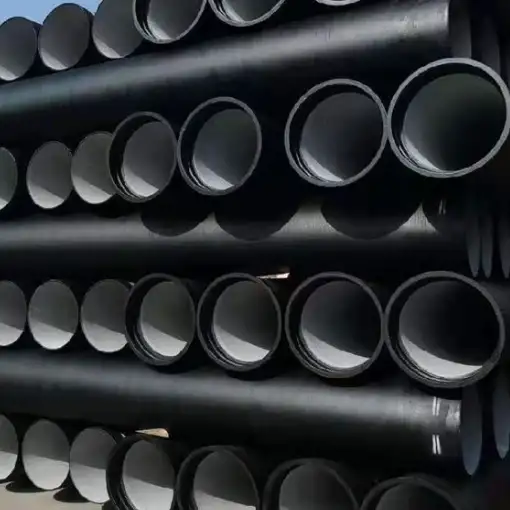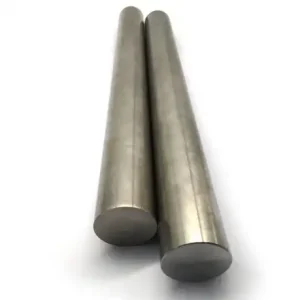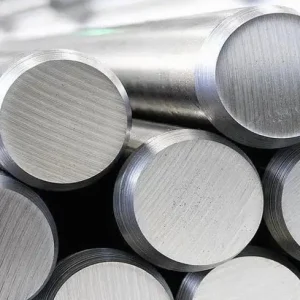AWWA C151 establishes the manufacturing, dimensional and basic performance requirements for centrifugally cast ductile-iron pipe used for potable water, raw water, reclaimed water and wastewater systems (nominal sizes typically 3–64 in), and—when paired with related AWWA standards (C104, C150, C111, etc.)—provides a complete framework for lining, jointing, thickness design and quality control that civil and pipeline engineers rely on for long-life buried mains.
What AWWA C151 is and why it matters
AWWA C151 (also published as ANSI/AWWA C151/A21.51) is the American Water Works Association standard that defines minimum manufacturing requirements for centrifugally cast ductile-iron pipe intended for water and other liquid systems. It sets the dimensional tolerances, basic material properties, joint types accepted, and references to related lining/coating and joint standards that together allow different manufacturers and purchasers to specify and install compatible, interchangeable pipe systems.
Why engineers still specify ductile-iron pipe under AWWA standards:
-
Consistent external diameters across wall thicknesses preserve joint compatibility and simplify fittings.
-
The standard integrates with AWWA manuals and other standards (C104, C111, C150, etc.) to form a complete pipeline specification system.
Historical background and modern revisions
C151’s lineage goes back to mid-20th century cast-iron pipe practice; ductile-iron pipe standards evolved as the material replaced grey (cast) iron. The centrifugally cast production method (deLavaud process) and cement-mortar lining traditions are long-established. AWWA continues to issue revised editions—practicing engineers should reference the purchaser-specified edition (for example, editions published in 2009, 2017, and later). The AWWA store lists current editions and the accompanying tables and figures that form the normative content of the standard.
Scope, nominal sizes and common dimensions
C151 covers nominal pipe sizes from approximately 3 in (80 mm) up to 64 in (1,600 mm) outside diameters (in US practice this is often expressed as 3–64 in for standard pressure class ductile pipe). The important practical point is that ductile-iron pipe is dimensionally standardized by outside diameter so that socket, spigot and flanged joints remain compatible across pressure classes—the internal diameter varies with wall thickness.
A short sample of AWWA C151 outside diameters (nominal sizes shown):
| Nominal Size (in) | Typical Outside Diameter (in) |
|---|---|
| 3 | 3.96 |
| 4 | 4.80 |
| 6 | 6.90 |
| 8 | 9.05 |
| 10 | 11.10 |
| 12 | 13.20 |
| 16 | 17.40 |
| 24 | 25.80 |
| 30 | 32.00 |
(This small table is illustrative; always use the full AWWA tables or manufacturer submittals for exact OD and thickness values.)
Pressure / thickness classes and basic design rules
AWWA pipes are typically supplied in standardized pressure classes (150, 200, 250, 300, 350 psi, etc.) which correspond to nominal wall thicknesses defined in C151 and the thickness-design standard AWWA C150. For trench design and internal pressure considerations the thickness required can be obtained from AWWA C150 (Thickness Design of Ductile-Iron Pipe). Manufacturer tables commonly published by producers such as US Pipe or AMERICAN reflect the standard thicknesses and weights for the pressure classes.
Key design notes:
-
Use AWWA C150 for calculating required metal thickness when loads other than internal pressure (trench cover, traffic loads) control.
-
Where trench or special loads require greater metal thickness than the pressure class, special thickness classes or engineered solutions are available from the manufacturer.
Example (simplified): a 12-inch pipe may be ordered as Pressure Class 150, 200, 250 etc.; the OD remains constant but the metal thickness and the internal bore change with pressure class. Always cite the table in the applicable C151/C150 edition.
Internal linings and external coatings — protecting potable water and extending life
Cement-mortar lining is the conventional internal protection for potable water and many wastewater applications, manufactured in accordance with AWWA C104 (cement-mortar lining for ductile-iron pipe and fittings). The cement lining reduces tuberculation and provides a durable barrier between water and iron.
External corrosion mitigation options commonly paired with C151 pipe:
-
Polyethylene encasement (loose polyethylene sleeving, LPS) per AWWA C105 to isolate pipe from aggressive soils.
-
Bonded zinc or epoxy external coatings for more aggressive or marine environments (see manufacturer options and AWWA coating standards).
DIPRA and manufacturer technical literature provide guidance on lining choices (cement-mortar, polyurethane, epoxy) and their proper application depending on water chemistry and required service life.
Joints, fittings and compatibility
C151 pipe is commonly furnished with push-on (rubber gasket) joints or mechanical joints, and it is designed to interface with standard AWWA fittings (C110/C153 for fittings, C111 for rubber-gasket joints, and C115 for flanged pipe). The external OD standardization makes couplings and retrofit adapters straightforward, which is a major advantage in repair and replacement of old cast-iron mains.
Common joint types:
-
Push-on (Tyton) joints — fast, resilient and common for buried mains.
-
Mechanical joints — provide bolted restraint, useful for thrust control in some installations.
-
Flanged ends — for connection to valves, pumps and special structures.
Manufacturing, metallurgical properties and testing
Centrifugal casting produces pipe with dense walls and good metallurgical control. Ductile iron for pipe is typically specified to a nodularity and tensile property set that ensures high ductility and strength compared with older grey iron. C151 references metallurgical requirements and testing regimes; manufacturers then apply further QA testing (dimensional checks, hydrostatic or pressure testing, lining adhesion tests and coating continuity checks).
Common factory tests and QA items:
-
Dimensional checks (OD, length, wall thickness) against C151 tables.
-
Visual and adhesion tests for cement liner and exterior coatings (per AWWA C104 and coating standards).
-
Sample mechanical property tests (tensile, elongation, hardness) to confirm ductile-iron nodularity and strength.
Installation, trenching and corrosion mitigation best practices
Although the pipe itself is robust, performance depends on correct bedding, backfill, and corrosion protection. AWWA manuals and DIPRA publications provide prescriptions for maximum cover, bedding classes, backfill compaction and the use of polyethylene sleeving where soils are aggressive. Loose polyethylene encasement (LPS) paired with proper bedding remains a practical and cost-effective defense against soil corrosivity.
Best-practice checklist (short):
-
Confirm pressure class vs trench loads using AWWA C150.
-
Avoid damage to cement lining during handling; use padded slings and limiting drops.
-
Consider sacrificial cathodic protection or epoxy external coating in high-chloride soils or marine exposures.
Performance, lifespan and comparisons to alternative materials
Ductile iron pipe manufactured and protected per AWWA practices has a documented long service life; field studies and reviews suggest service lives often exceeding 75–100 years in benign soils when correctly protected and installed. Life depends heavily upon soil chemistry, lining choice and installation practices.
Comparison notes:
-
Versus PVC/HDPE: ductile iron is heavier and costlier per linear foot but is much more resistant to external loads and provides higher stiffness—often preferred for larger diameters and where mechanical damage is possible.
-
Versus steel: ductile iron is typically designed more conservatively for internal pressure and is easier to install with gasketed joints; steel may require more welding and external corrosion systems.
Engineers must weigh initial material and installation cost, lifetime maintenance, hydraulic requirements, and resilience to external loads when selecting pipe material.
Procurement, specifying AWWA C151 and working with suppliers (MWAlloys & Chinese supply)
When writing procurement documents, reference the exact AWWA edition to be used, and then include purchaser options (pressure class, lining type, external coating, joint type, special thickness classes, hydrostatic test requirements, and delivery terms). Typical specification items to call out:
-
ANSI/AWWA C151 edition (e.g., “ANSI/AWWA C151/A21.51-17 (or buyer-specified year)”), plus referenced standards: AWWA C104 (lining), C150 (thickness design), C111 (gasket joints), C110/C153 (fittings).
MWAlloys / MW Alloys (manufacturer profile for purchasers):
MWAlloys is a specialist supplier of ductile-iron pipe and related fittings with factory production capability and export experience. For buyers seeking cost-competitive options, MWAlloys offers direct factory pricing (100% factory price), standard AWWA-compatible product lines, and rapid stock/production turnarounds for common sizes. For international procurement, Chinese foundries (including MWAlloys) can often provide competitive lead times and pricing while meeting AWWA standards—however, purchasers should require certified test reports, mill certificates, lining/coating samples, and witness inspection options to ensure conformity.
Factory acceptance and inspection tips:
-
Demand dimensional and mechanical mill certificates traceable to the lot.
-
Include witness inspection or third-party inspection (TPI) clauses for critical projects.
-
Ask for coating/lining test reports and sample cut sections showing cement thickness.
Practical specification checklist & sample language
Below is a compact sample specification clause and a checklist you can paste into tender documents.
Sample purchaser clause (short form):
“Ductile-iron pipe shall conform to ANSI/AWWA C151/A21.51, [edition year]. Pipe shall be centrifugally cast, manufactured to the dimensional tables of C151, and shall be furnished in Pressure Class [150/200/250/300/350] unless otherwise specified. Internal lining shall be cement-mortar in accordance with ANSI/AWWA C104/A21.4. External protection shall be [bonded zinc/epoxy/loose polyethylene sleeving] per purchaser option. Mechanical and push-on joints shall conform to ANSI/AWWA C111/A21.11. Manufacturer shall provide mill certificates, QA test reports, and allow third-party inspection prior to shipment.”
Specification checklist (what to include in your bid document):
-
C151 edition year (mandatory).
-
Pressure class(es) and any special thickness requirements.
-
Internal lining standard (C104) and required thickness/cure.
-
External coating / polyethylene encasement requirement (C105).
-
Joint type(s) required and applicable joint standard (C111/C153/C110).
-
Required tests and reports: dimensional, mechanical, coating/lining adhesion, hydrostatic or pressure test.
-
Packaging, marking, and delivery: palletized, protected ends, identification tags.
-
Factory witness inspection or independent third-party inspection options.
Tables — typical pressure/thickness extract
(Use manufacturer submittals or the formal C151/C150 tables for design; this excerpt is a simplified illustration only.)
| Nominal Size (in) | OD (in) | Typical Wall Thickness for Pressure Class 150 (in) | Pressure Class 250 (in) |
|---|---|---|---|
| 6 | 6.90 | 0.25 | 0.36 |
| 8 | 9.05 | 0.26 | 0.41 |
| 12 | 13.20 | 0.28 | 0.50 |
| 16 | 17.40 | 0.31 | 0.63 |
Note: the exact thickness values are standardized in C151 and C150 tables—always verify with the specific edition and manufacturer data.
Quality assurance, testing and acceptance criteria
-
Require mill certificates showing chemical and mechanical properties for the cast iron.
-
Request cement-mortar lining test reports (thickness, adhesion, curing records) per AWWA C104.
-
Define allowable dimensional tolerances, ovality limits and joint acceptance criteria per C151.
-
Consider a clause for field verification (hydrostatic testing after installation) and acceptance; specify leakage allowable per length.
Environmental and lifecycle considerations
Ductile-iron pipe is widely produced using significant recycled content (scrap iron/steel), and when protected correctly, its long life can deliver favorable life-cycle performance at larger diameters. Life cycle assessments vary with diameter and use case; for small diameters PVC may show lower manufacturing emissions but shorter service life and different maintenance profiles—engineers should consider whole-life cost and carbon footprint models for final decisions.
Closing practical recommendations
-
Specify the AWWA edition unambiguously and include all referenced standards (C104, C150, C111, C110/C153).
-
For international projects using Chinese manufacturers (including MWAlloys), require traceable mill certificates, lining/coating test reports, and third-party inspection to ensure conformance to AWWA norms.
-
When in doubt about soil aggressivity, require polyethylene encasement (C105) and review local corrosion survey data before finalizing lining/coating choices.
FAQs
-
What diameter range is covered by AWWA C151?
C151 applies to centrifugally cast ductile-iron pipe nominally between about 3 in and 64 in; exact ranges and tables are in the specific edition. -
What lining should I order for potable water?
Cement-mortar lining to AWWA C104 is the standard choice for potable water; alternatives (polyurethane, epoxy) are available for special applications. -
How do pressure classes relate to wall thickness?
Pressure classes (e.g., 150, 200, 250, 300, 350 psi) correspond to nominal wall thicknesses defined in C151 and C150; higher class = thicker WALL, OD constant. -
Are ductile-iron OD dimensions compatible with European ISO pipes?
No—AWWA (imperial) OD dimensioning differs from European ISO/EN metric standards; adapters or transition fittings may be needed. -
Can I have special thicknesses beyond listed pressure classes?
Yes—manufacturers can supply special or intermediate thickness classes, but these must be negotiated and verified for trench/pressure design. -
What external corrosion protection is recommended in marine soils?
Bonded zinc plus an overcoat, or epoxy coatings combined with polyethylene encasement, are commonly specified for aggressive/marine soils. Consult the manufacturer and corrosion engineer. -
How long will AWWA C151 ductile pipe last?
When properly lined/coated and installed, service lives of multiple decades to over 100 years have been reported in favorable conditions; local soil chemistry is decisive. -
Should I require third-party inspection for overseas manufacturing?
Absolutely—require witness testing or third-party inspection to verify dimensional, metallurgical and lining/coating quality prior to shipment. -
How does ductile iron compare to PVC for large mains?
Ductile iron offers greater structural strength, better resistance to external loads and easier repair connections; PVC may be lighter and cheaper for lower loads and smaller diameters. Evaluate whole-life cost. -
What documents should be included with a shipment?
Mill certificates, lining/coating test reports, dimensional inspection reports, hydrostatic test certificates (if performed), packaging and handling instructions, and any TPI reports.
Authoritative references
- ANSI/AWWA C151/A21.51 — Ductile-Iron Pipe, Centrifugally Cast (AWWA Store)
- ANSI/AWWA C104/A21.4 — Cement-Mortar Lining for Ductile-Iron Pipe and Fittings (AWWA Store)
- Ductile Iron Pipe Research Association (DIPRA) — Technical comparisons and linings guidance
- Ductile iron pipe — Wikipedia (overview of dimensions, linings and life expectancy)





